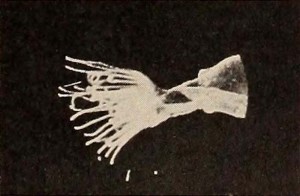
"The eagerness of a movie maker to use a new cine camera is the clever introduction and leitmotivof Movie Bugs, an exceedingly well photographed picture by Dr. Frederick W. Brock. The picture tells how the movie maker protagonist gets in touch with a science teacher and how the two of them construct a support for the camera for use with it in filming through a microscope. The succeeding shots of hydrae and paramecia and other microscopic organisms are beautifully filmed, and the picture infers the obvious conclusion that any university zoology department should be equipped to make such studies. Clean cut interior lighting and a well knit story distinguish this fine filming job." Movie Makers, Dec. 1938, 620.
"doc. scientifico"/scientific documentary
"doc. scientifico"/scientific documentary
"Operazioni, III, realizzato da Gian Luigi Dorigo, nella Sala Operatoria della Divisione Chirurgica Ortopedica del prof. Francesco Delitala, Ospedale Civile di Venezia. Il film fa parte della Serie delle Operazioni che Gian Luigi Dorigo sta realizzando con l'intento di interpretare gli interventi chirurgici in forma non inespressiva, come fino ad oggi i documentarii scientifici, ma valendosi dei mezzi precipi del cinematografo, e in una parola, del montaggio, per la più chiara ed evidente dimostrazione dell'assunto. La pellicola col titolo Una Mattina di Operazione ha partecipato ai Littoriali riscuotendo vivo interessamento. Gian Luigi Dorigo descrive in un articolo su questo numero le sue opinioni nei riguardi del film scientifico."
"Operations, III, made by Gian Luigi Dorigo, in the Operating Room of the Orthopedic Surgery Division of Prof. Francesco Delitala, Civil Hospital of Venice. The film is part of the Series of Operations that Gian Luigi Dorigo is making with the intent to represent the surgical interventions in an expressive way, as up to now the scientific documentaries, but availing himself of the specific means of cinema, and in a word, the montage, for the clearest and most obvious demonstration of the thesis. The film with the title Una Mattina di Operazione (A Morning of Operation) participated in the Littoriali, attracting great interest. Gian Luigi Dorigo describes his opinions on scientific films in an article in this issue."
—Il ventuno 28 (Review of the G.U.F. of Venice), May 1935, p. 16"
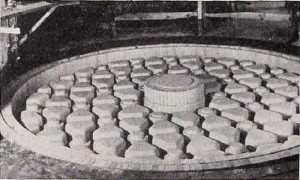
"Pouring A 200 Inch Telescope Mirror, by Edmund H. Wellech, ACL, is a glorified industrial but greatly worthy as a clear record of one of civilization's milestones. Mr. Wellech's film, in addition to being an important scientific document, is, besides, a truly excellent cinematic achievement, for it makes an involved subject entirely understandable. The accomplishment of the single task of determining the correct exposure for scenes of molten glass against a dead black background is in itself a feat that would make the film outstanding. But, beside this, there are carefully worked out cinematic exposition and an approach to perfection in every aspect. As an engineer working at night for the Corning Glass Company, Mr. Wellech devoted his spare daytime hours to making this noteworthy film." Movie Makers, Dec. 1934, 546-547.
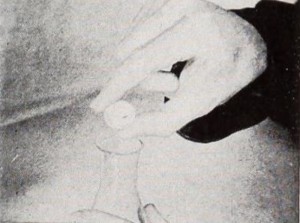
"In order to acquaint university students with courses of study other than those which they pursue, Mervyn V. Miller has filmed The School of Physical Sciences. In so doing, he has given each department significant and generous footage to display its particular factors. The result gives other students a general understanding of an activity which otherwise might remain obscure to them. Mr. Miller's project is believed to be the first of its kind. He presented it as a thesis for a doctorate. The film is intelligently planned, edited and executed in such a way as to introduce the student to the unusual features, as well as the commonplace facts, of each of the physical sciences of the school. Through the shrewd handling of the script, the picture is developed as an excellent medium of orientation." Movie Makers, Dec. 1944, 496.
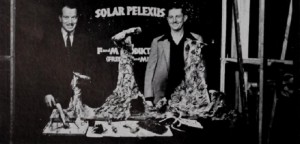
"Mel Weslander and Harry French of San Francisco, with 'Solar Pelexus,' were winners of Agfa's contribution of six rolls of film. As the misspelling of the title indicates, the subject was a farce portraying the journey of two men to another planet in a rocket." American Cinematographer, Jan. 1938, 28.
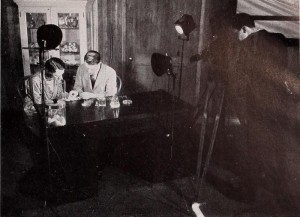
"The six reel film, Technical Methods in Cancer Research, produced by Francis Carter Wood, jr., ACL, for the American Journal of Cancer, is the most distinguished and thoroughgoing scientific picture viewed this year in League headquarters. In it Mr. Wood, working in collaboration with his father, editor of the Journal, has presented in detail the many processes evolved and used at Crocker Institute of Columbia University in the treatment and study of cancer. Difficult details of clinical analysis are shown clearly with accurate lighting and unfailing definition. Laboratory bench work on specimen growths is supplemented by microscopic studies of corresponding cells. One entire reel is devoted to a unique stop motion study of leading cancer cells in living motion. Throughout the film Mr. Wood's camera treatment, editing and titling are polished and forceful." Movie Makers, Dec. 1932, 560.
doc. scientifico"/scientific documentary

"Jack E. Gieck's film is a fanciful abstract study delineating the aspect and activity of the planet Uranus. In it he has wisely kept his footage brief. His lighting effects on models of the mountains and the color patterns of liquids reflect an imaginative concept. A rather too soft focus toward the end of Uranus is somewhat unexplainable, but his choice of an excellent musical score contributes to a fascinating creative experiment." Movie Makers, Dec. 1951, 412.
scientific documentary
Total Pages: 4